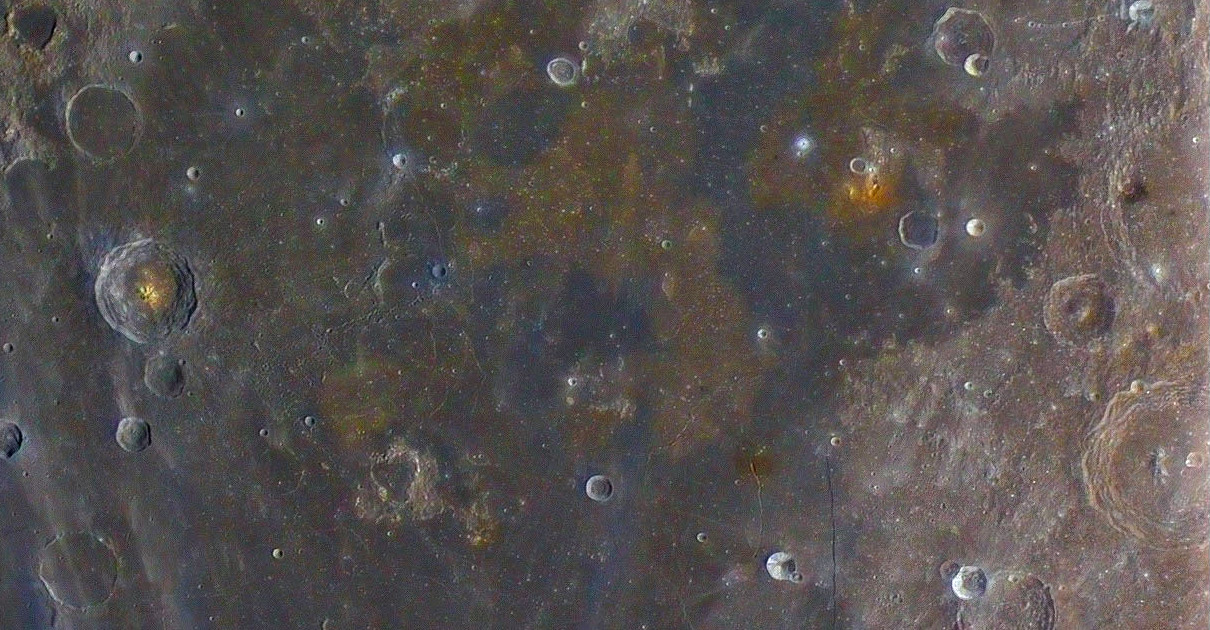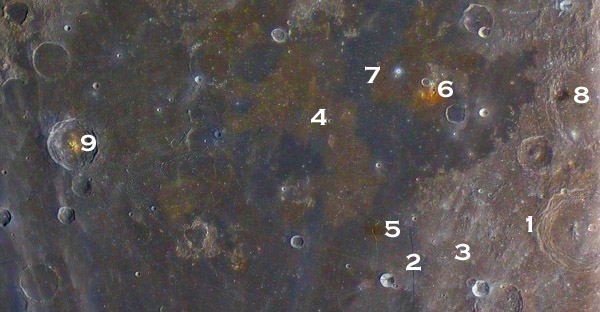May 15, 2019
Spotted Moon
Originally published January 31, 2010

image by Michael Hunnekuhl, Hannover Germany
 |
In Michael's enhanced color image of the region around Tycho, light orange seemed to be the underlying hue for the highlands. Here, to the bottom right we see that that is true for the cratered terrain (1) east of the Straight Wall (2), but also for the smooth mare surface east of the Wall (3), possibly due to dusting by nearby highland craters. More intense orange occurs in the middle of the scene (4, for example), areas of Mare Nubium that are light hued. These orange areas also host more small impact craters and thus are older lavas now surrounded by dark younger ones. Do these lavas contain more of the material that causes the orange hue than the younger dark lavas? A hint that this may be correct is provided by two intensely bright orange spots. One is the dome (5) cut by the northern end of the Birt Rille. The dome extent matches very closely with the more intense orangeness. The other, and brightest, orange spot (6) is northwest of Lassell. A small bright crater appears to have brought bright orange material to the surface and distributed it as ejecta. Incidentally, a very tiny dark spot (7) is a volcanic cone imaged by Apollo 16 astronauts; its darkness is similar to the volcanic dark halo deposit (8) in Alphonsus. Finally, a different sort of color anomaly appears at the central peak (9) of Bullialdus. The detection of these probably compositionally different material is impressive, but to try to decipher more precisely the differences requires calibration the multispectral images.
|
Yesterday's LPOD: Weird Moon News
Tomorrow's LPOD: The Moon Also Rises
COMMENTS?
Register, Log in, and join in the comments.



